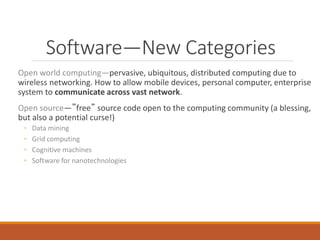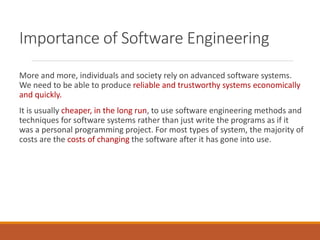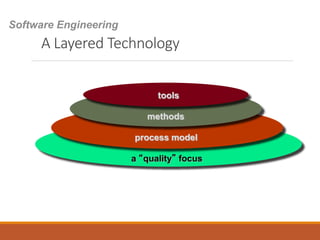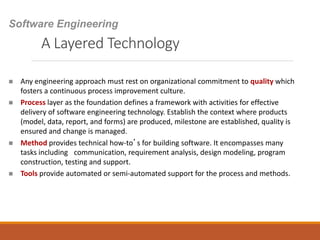Software encompasses computer programs, data structures, and documentation. It is developed through software engineering processes and methods rather than manufactured. While software doesn't physically deteriorate, it does deteriorate over time due to changes. Software engineering aims to develop software through systematic, disciplined, and quantifiable approaches to achieve reliable and efficient software economically.








![The IEEE definition:
Software Engineering: (1) The application of a systematic,
disciplined, quantifiable approach to the development,
operation, and maintenance of software; that is, the
application of engineering to software. (2) The study of
approaches as in (1).
[Software engineering is] the establishment and use of
sound engineering principles in order to obtain
economically software that is reliable and works
efficiently on real machines.
Software Engineering Definition](https://image.slidesharecdn.com/chapter01-220601072331-43bf3eb8/85/Chapter_01-ppt-9-320.jpg)
















